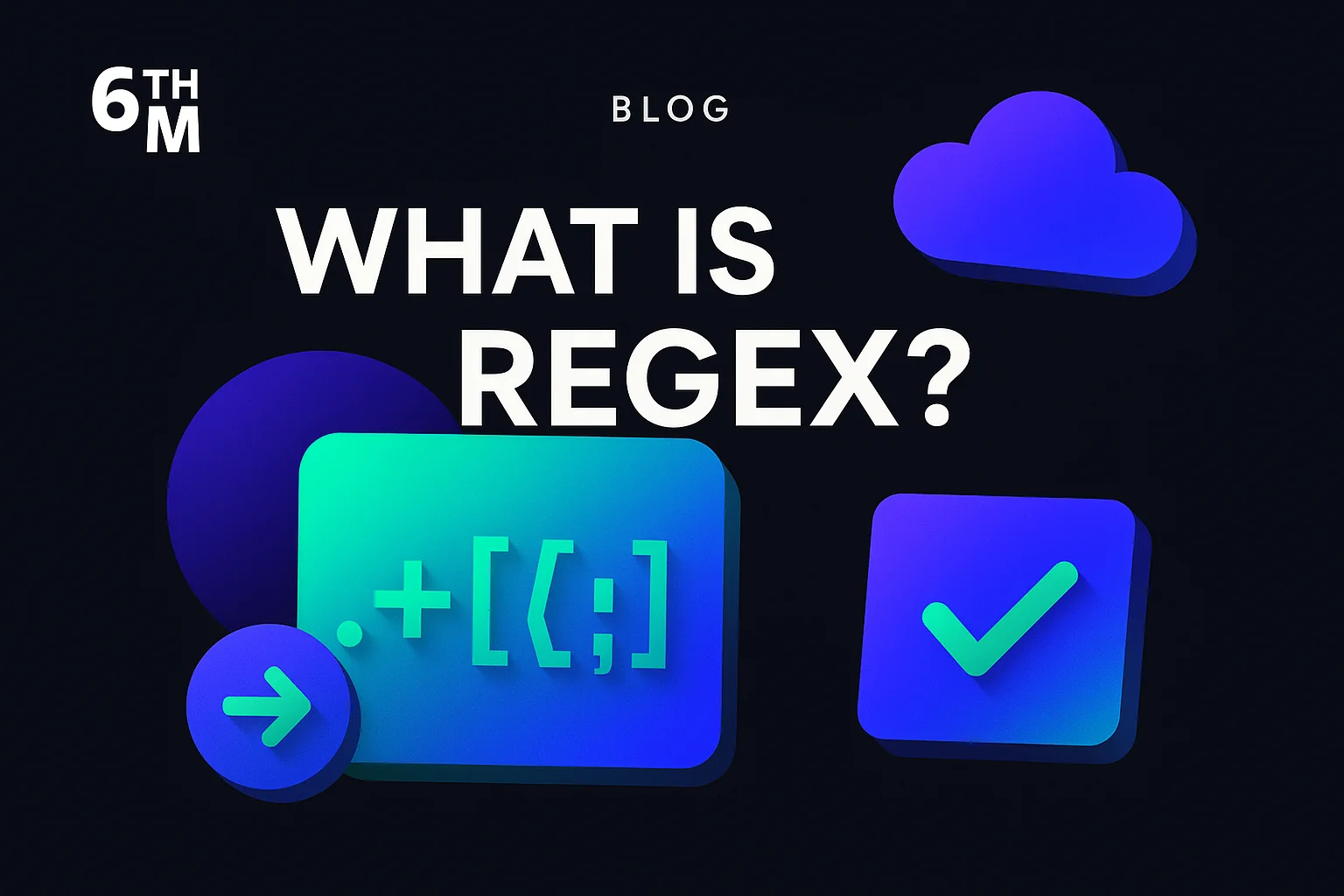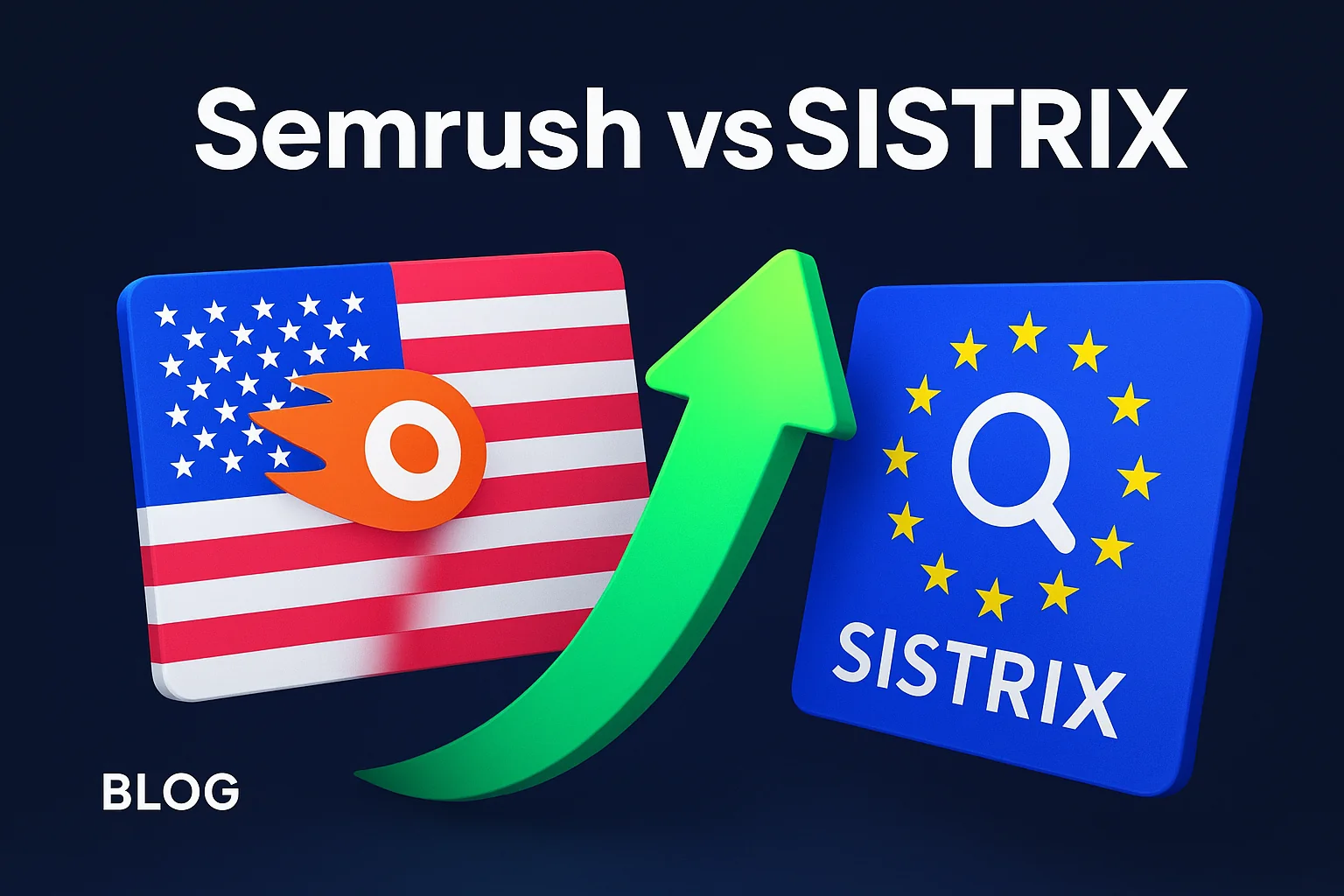What Is Regex?
Regex (short for regular expression or regexp) is a compact language for describing text patterns. If you’ve ever needed to find, validate, or transform strings at scale, regex is the fastest way to do it. In this guide, you’ll get a clear regex definition, a practical regex tutorial, a regex cheatsheet, and copy-paste regex examples that work in JavaScript, Python, and analytics tools.
At its core, a regular expression is a pattern that a regex engine matches against input text. With a few symbols, you can locate emails, clean URLs, extract IDs, or validate forms. Most languages ship with a regex engine: JavaScript (built-in), Python (re), and many systems use PCRE or RE2 under the hood.
Use regex when you need consistency and speed. It’s deterministic, easy to test with a regex checker, and portable across your stack—from code to data tools.
Why Use Regex? Common Use Cases
Regex accelerates repetitive text work. You write a pattern once, then run it across thousands or millions of strings. Below are the most common areas where regex shines for developers and marketers.
Data Cleaning And Extraction
Regex is perfect for data cleaning: remove noise, normalize formats, and extract fields. Think “regex data cleaning” for analytics pipelines, CRM exports, or product feeds. You can quickly isolate SKUs, trim tracking parameters, or split names and IDs.
- Normalize casing and whitespace: s/+|\\s+/ → single space.
- Remove tracking from URLs: \\?.*$ → '' (strip query strings).
- Extract product codes: SKU-(\\d{4,}) captures numeric IDs.
In Python’s pandas, vectorized regex functions make this painless. In JavaScript, run a global replacement with /pattern/g to transform client-side strings before sending to your API.
Validation And Input Sanitization
Regex for validation is a classic use case: emails, phone numbers, postcodes, VAT IDs, and more. You can block obvious bad inputs early and keep your database clean.
- Email format quick-check: ^[^\\s@]+@[^\\s@]+\\.[^\\s@]+$.
- E.164 phone baseline: ^\\+?[1-9]\\d{7,14}$.
- Postal codes (country-specific): use conditional groups and alternations.
Don’t overfit validation—aim for “looks valid,” then do deep verification server-side. Regex is excellent for syntax checks; business rules should live in code.
Search, Replace, And Transformations
Find-and-replace becomes a power tool with regex. Convert formats, reorder with capturing groups, and perform bulk edits safely.
- Reformat names: ^(\\w+),\\s*(\\w+)$ → $2 $1 to switch “Last, First” to “First Last”.
- Slugify titles: keep [a-z0-9-], drop everything else, fold spaces to dashes.
- Standardize dates: recognize multiple inputs and output ISO 8601.
Use non-greedy quantifiers and explicit anchors to avoid accidental matches when transforming long documents or HTML snippets.
Log Parsing And Monitoring
Regex helps parse logs for observability and security. Extract IPs, status codes, and paths from Nginx or application logs, then alert on anomalies.
- IP address: \\b(?:\\d{1,3}\\.){3}\\d{1,3}\\b.
- HTTP status: \\s(2\\d\\d|3\\d\\d|4\\d\\d|5\\d\\d)\\s.
- Detect suspicious user agents: (bot|spider|crawl|headless).
With good patterns, you can power dashboards, triage errors faster, and keep costs down by extracting only the fields you need.
Regex Syntax Cheat Sheet
Here’s a compact regex cheatsheet you can scan in seconds. It covers literals, character classes, quantifiers, anchors, groups, lookarounds, and flags—enough to read and write most patterns you’ll use in production.
Literals And Character Classes
Literals match themselves. Special characters (like ., *, ?, +, [, ], (, ), {, }, ^, $, |, \\) need escaping to be treated as literals.
- Dot: . matches any character (except newline in many engines unless dotall).
- Digit: \\d (non-digit \\D), word char: \\w (non-word \\W), whitespace: \\s (non-whitespace \\S).
- Custom set: [abc] matches a, b, or c; ranges: [a-z]; negation: [^a-z].
- Escaping: literal dot \\., literal plus \\+, literal question \\?.
Quantifiers
Quantifiers specify “how many” of the preceding token to match. They’re greedy by default; add ? after them to make them lazy.
- * = 0 or more, + = 1 or more, ? = 0 or 1.
- {n} = exactly n, {n,} = n or more, {n,m} = between n and m.
- Greedy vs lazy: .+ vs .+? (lazy stops at first possible match).
- Possessive quantifiers like ++ exist in some engines (PCRE, Java) but not in JavaScript or RE2.
Anchors And Boundaries
Anchors don’t consume characters; they assert positions. Use them to make patterns precise and fast.
- Start/end: ^ (start), $ (end). With multiline flag, they apply per line.
- Word boundaries: \\b (between word and non-word), \\B (not a boundary).
- Line boundaries in logs and CSVs make extraction simpler and safer.
Groups, Captures, And Backreferences
Groups let you capture or structure parts of a match. Captures can be reused in replacements or referenced later in the same pattern.
- Capturing: (…). Non-capturing: (?:…) to group without saving.
- Backreferences: \\1, \\2 refer to earlier groups (JS replacement uses $1, Python uses \\1 or named groups).
- Named groups: (?<name>…) in many engines; Python replacement with \\g<name>.
Assertions: Lookahead And Lookbehind
Lookarounds match context without consuming it. Lookahead is widely supported; lookbehind support varies by engine.
- Positive/negative lookahead: X(?=Y), X(?!Y).
- Positive/negative lookbehind: (?<=Y)X, (?<!Y)X (works in Python, modern JavaScript engines, not in RE2/Looker Studio).
- Use lookahead for boundary checks where lookbehind is unavailable.
Flags
Flags modify how patterns run. You’ll see them inline or as parameters.
- Common: i (case-insensitive), g (global, JS), m (multiline), s (dotall), u (Unicode-aware).
- JavaScript: /pattern/igm. Python: re.compile(r'pattern', re.I | re.M).
- Unicode matters for international storefronts—use u where available.
Quick Examples Developers Can Copy
Validate Email
Use regex to catch obviously malformed emails, then verify delivery separately. A pragmatic pattern is enough for signups and forms.
Pattern: ^[^\\s@]+@[^\\s@]+\\.[^\\s@]+$
- JavaScript: /^[^\\s@]+@[^\\s@]+\\.[^\\s@]+$/i.test(email)
- Python: re.match(r'^[^\\s@]+@[^\\s@]+\\.[^\\s@]+$', email, re.I)
Avoid ultra-strict patterns that reject real addresses. Keep the gate open; let your confirmation email do the hard check.
Extract IDs From URLs
When URLs contain numeric or alphanumeric IDs, capture them with a group. This is common for product or order pages.
Pattern examples:
- /product/(\\d+) captures numbers after /product/.
- /items/(?:id|sku)-(\\w+) captures “id-ABC123” or “sku-XYZ99”.
In JS, use const m = url.match(/product\\/(\\d+)/); in Python, m = re.search(r'/product/(\\d+)', url). Use m[1] or m.group(1) to access the ID.
Normalize Phone Numbers
First strip non-digits, then enforce a format. This two-step approach is stable across countries.
- Remove everything except digits: /\\D+/g → ''.
- Enforce length/country rules, then prepend + if needed.
If you must capture parts: ^(?:\\+?(\\d{1,3}))?(\\d{6,14})$ separates country code and local number for reformatting.
Parse Query Strings (UTM Extraction)
Extract UTM parameters for campaign analysis. Regex isolates key-value pairs without a full parser.
- [?&]utm_source=([^&#]+) for source.
- [?&]utm_medium=([^&#]+) for medium.
- [?&]utm_campaign=([^&#]+) for campaign.
In JavaScript, apply decodeURIComponent to captured values. In Python, consider urllib.parse for robustness if you control the codebase.
Replace HTML Tags Safely
Rule of thumb: use an HTML parser for complex work. For simple sanitization or removing tags, a limited regex can be acceptable.
Remove tags but keep text: <[^>]+> → '' (do not use on untrusted input where XSS is a risk). For safe transformations at scale, defer to a parser and use regex for final touch-ups only.
Regex For Marketing: Looker Studio Examples
Why Regex In Looker Studio?
Regex in analytics tools helps you group, filter, and normalize data—without leaving the dashboard. In Looker Studio, regex unlocks clean channel groupings, consistent landing page paths, and reliable campaign tagging, especially when sources are messy or incomplete.
It’s fast, transparent, and easy to maintain. If you’re building SEO dashboards, regex can reduce manual cleanup and produce stable insights week after week.
Extract Campaign Source From UTM
Use REGEXP_EXTRACT to capture UTM values directly from page or event parameters.
- Source: REGEXP_EXTRACT(Landing Page, r'[?&]utm_source=([^&#]+)')
- Medium: REGEXP_EXTRACT(Landing Page, r'[?&]utm_medium=([^&#]+)')
- Campaign: REGEXP_EXTRACT(Landing Page, r'[?&]utm_campaign=([^&#]+)')
This approach is resilient across tracking setups and ideal for blended datasets. For a deeper walkthrough on reporting structure, see our guide to building SEO dashboards with Looker Studio.
Normalize Landing Page Paths
Standardize paths so your reports don’t split by trailing slashes or query parameters. This makes landing page analysis cleaner and trend lines stable.
- Strip query strings: REGEXP_REPLACE(Landing Page, r'\\?.*$', '')
- Remove trailing slash (except root): REGEXP_REPLACE(Path, r'(.+?)/$', '\\1')
- Lowercase path segments: use a lowercase function if available, paired with regex cleanup.
When you enforce consistency at the source, filters and segments stay reliable across all your dashboards.
Filter Bot Traffic By User Agent Pattern
Block obvious bots to avoid skewed metrics. Start with a broad net, then refine based on your traffic.
- User agent contains: (bot|spider|crawl|headless|scrapy|urllib).
- Exclude known uptime monitors to avoid false positives.
- Combine with IP filters for persistent offenders.
Always validate changes against a control period—filtering too aggressively can hide legitimate automation or partner traffic.
Looker Studio Escaping And Engine Notes
Looker Studio uses a RE2-like engine. That means lookbehind isn’t supported, some advanced backtracking features are unavailable, and performance is predictable.
- No lookbehind: refactor to use lookahead or anchored captures.
- Escape carefully: backslashes in strings require double-escaping, especially in r-prefixed patterns and UI fields.
- Favor explicit anchors to avoid partial matches and speed up scans.
Design patterns for clarity and maintainability. You’ll thank yourself when you revisit dashboards months later.
Testing Regex Inside Looker Studio
Create calculated fields and use small sample tables to validate outputs before rolling into production dashboards. Check nulls, edge cases, and multilingual inputs.
- Test each REGEXP_EXTRACT or REGEXP_REPLACE with known-good and known-bad examples.
- Version your calculated fields with clear labels (e.g., “v2-source-clean”).
- Document patterns in your data dictionary for team visibility.
If your marketing operations need broader automation around data cleanup and routing, our automation services can help embed this rigor across tools.
Regex is useful for marketing purposes
Regex is useful for marketing purposes because it brings structure to messy data—especially Looker Studio. With a few patterns, you can group campaigns consistently, clean landing pages, and filter noise, all without exporting to Excel or writing custom code.
We use regex to align UTM taxonomies across paid media and SEO, fix inconsistent path naming, and enrich dashboards with computed fields. The result: faster insights and fewer reporting surprises.
Testing, Debugging, And Tools
Recommended Regex Testers
Before deploying, validate your pattern with a regex tester. Popular choices include regex101, RegExr, and language-specific playgrounds. A good regex checker should let you test flags, view match groups, and simulate multiline input.
- Test with both typical and pathological strings.
- Save test cases alongside your pattern for regression checks.
- Verify engine compatibility (PCRE vs JavaScript vs RE2 can differ).
When your data is multilingual or spans multiple encodings, confirm Unicode behavior and normalization rules.
Test - Stage - Deploy Workflow
Treat regex like production code. A simple process reduces breakage and keeps dashboards accurate.
- Unit test: verify the pattern against curated fixtures and edge cases.
- Stage: apply the regex to a sampled dataset or non-critical dashboard.
- Deploy: roll out incrementally, monitor metrics, and keep a rollback handy.
Document every pattern: intent, examples, and known limitations. This saves time for the next person who touches it—often you in three months.
Logging And Edge Case Coverage
Log match rates and null outputs after deployment. If 30% of rows suddenly return nulls, your regex is too strict or the upstream format changed.
- Track coverage metrics per field: extraction rate, unique value counts, error rates.
- Alert on spikes in “unknown” categories after new campaigns launch.
- Rotate sample checks weekly to catch quiet regressions.
When formats drift (new SKU shapes, added query params), update your pattern and tests together.
Engine Differences And Performance Notes
PCRE, JavaScript, RE2 - What Changes
Not all engines support the same features. PCRE is rich in features; JavaScript is modern but still lacks some edge cases; RE2 prioritizes safety and refuses constructs that can blow up.
- Lookbehind: works in Python and modern JavaScript; not supported in RE2.
- Atomic groups and possessive quantifiers: available in PCRE/Java; typically absent in JS/RE2.
- Named groups: supported in Python and modern JS; syntax differs between engines.
When building for analytics (often RE2) and web apps (JS), target the lowest common denominator or maintain engine-specific variants.
Performance Pitfalls
Catastrophic backtracking can stall your app or dashboard. It appears when nested quantifiers meet ambiguous patterns.
- Avoid patterns like (.+)+ or (.*)*.
- Use atomic grouping or possessive quantifiers when available; otherwise, tighten tokens.
- Anchor patterns and specify character classes instead of .* where possible.
Measure. Ingesting millions of rows? Benchmark on representative data and cap processing timeouts to prevent resource drains.
When To Use Parsers/Tokenizers Instead
Regex isn’t a silver bullet. For nested or context-sensitive structures, choose a parser or tokenizer.
- HTML/XML: use a DOM parser for accuracy and security.
- JSON/CSV: use dedicated parsers—schema-aware and robust to edge cases.
- Complex logs: combine parsing libraries with targeted regex for final tweaks.
Use regex where it excels: flat patterns, predictable boundaries, and high-speed matching. Defer to parsers when structure matters.
Best Practices And When Not To Use Regex
Make Patterns Readable
Readable regex outperforms clever regex in real teams. Favor clarity and comments over one-liners only you understand.
- Name groups: (?<sku>\\d{6}) is self-documenting.
- Break complex patterns into smaller, tested pieces.
- In engines that support it, use extended mode with comments; if not, document next to code.
Add examples near the pattern: “Matches: X, Y. Doesn’t match: Z.” Future you will be grateful.
Versioning And Storing Patterns
Treat patterns like code. Store them in version control, add tests, and tag releases.
- Centralize in a shared repo or config store accessible by marketing and engineering.
- Keep a changelog explaining why a pattern changed (e.g., “added support for new UTM vendor”).
- Deprecate safely: ship v2 side-by-side, compare outputs, then retire v1.
If you operate many dashboards, consolidate common regex into a single source of truth to avoid drift.
Security Considerations And Input Validation
Regex can introduce risks if misused. Protect your systems and users with a few guardrails.
- ReDoS: avoid catastrophic backtracking; enforce timeouts and input length limits.
- Untrusted input: never rely on regex alone for security; validate and sanitize inputs with layered controls.
- Escaping: when interpolating user strings into patterns, escape them first to prevent regex injection.
In web contexts, combine regex filters with strict allowlists and server-side checks. Defense in depth wins.
Work With A Regex-Savvy Growth Partner (Contact 6th Man)
If you want marketing that moves fast and reports you can trust, we’re your team. At 6th Man, we use regex daily to tidy data, unify tracking, and make dashboards that leaders actually use. We plug in quickly, work alongside your team, and focus on outcomes, not fluff.
- See how we build reporting that drives decisions: SEO dashboards with Looker Studio.
- Explore our broader capabilities across search and performance: digital marketing services and SEO and SEA services.
- Check real-world impact: browse our case studies.
Ready to make your data cleaner and your growth faster? Let’s talk about your stack, your goals, and how we can help—start the conversation here: contact 6th Man.




.jpeg)